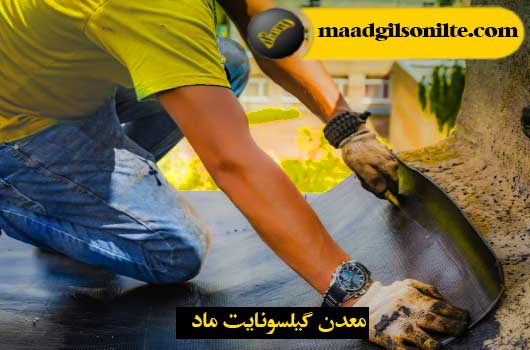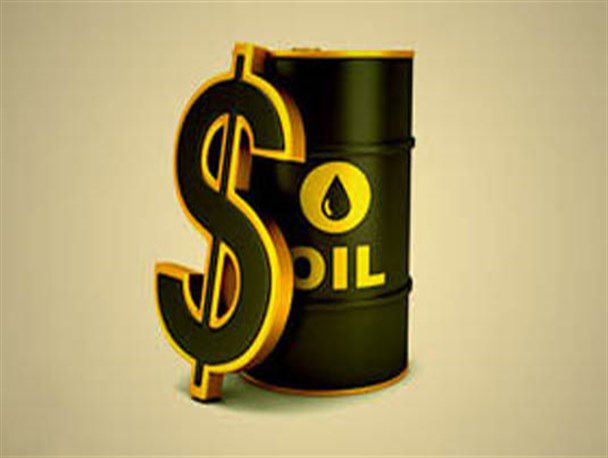
Bituminous waterproofing is a very effective type of waterproofing method that has been used for centuries to protect roofs, foundations and other structures from water damage. Bituminous waterproofing consists of asphalt, a semi-solid form of petroleum, which is either modified with polymers or used in its pure form. There are many different types of bituminous membranes available and each has unique advantages and disadvantages. In this article, the principles of bituminous waterproofing, its types, installation, maintenance and repair techniques, applications and environmental effects are introduced.
When it comes to protecting buildings and structures from water damage, bitumen waterproofing is a popular solution. This method involves applying layers of bitumen on the surface in order to create a barrier that prevents water penetration. In this article, we’ll take a closer look at bituminous waterproofing, why it’s popular, the different types of systems available, and how to properly prepare and apply it.
Bitumen waterproofing involves the use of bitumen, also known as asphalt or bitumen, which is a sticky, sticky substance derived from crude oil. This material is applied to create a waterproof barrier on a surface such as a roof or foundation. Bitumen can be reinforced with various materials such as fiberglass or polyester to increase its strength and durability.
This product has been used for thousands of years and dates back to ancient civilizations such as Babylonians and Egyptians who used asphalt as a sealant. The Romans also used bitumen waterproofing in their architecture, including aqueducts and underground structures. In the early 20th century, the use of bitumen for waterproofing became common in construction, and it remains a popular choice due to its durability and efficiency.
Bituminous waterproofing is popular because it has many advantages such as durability and resistance to harsh weather conditions such as UV rays, rain and extreme temperatures. It also has a relatively low cost compared to other waterproofing systems, making it an attractive option for people on a tight budget. Additionally, bitumen is a readily available material that can be easily sourced from local suppliers, making it a viable option for many contractors and builders.
There are different types of bitumen waterproofing systems, each of which has its own characteristics, advantages and disadvantages. Let’s take a closer look at three of the most popular types:
This type of system involves using a propane torch to heat the bitumen, which is then applied to the surface. The heat causes the bitumen to melt and adhere to the surface, creating a waterproof seal. Bituminous waterproofing with a torch is quick and efficient, making it a popular option for large projects.
SBS modified bitumen waterproofing involves adding a synthetic rubber called styrene-butadiene-styrene (SBS) to the bitumen. This modification improves the flexibility and durability of the material and makes it more resistant to cracking and damage caused by movement or displacement on the surface.
APP modified bitumen waterproofing is similar to SBS modified bitumen waterproofing, but instead of SBS, a plastic polymer called atactic polypropylene (APP) is added to the bitumen. This modification helps improve the material’s resistance to UV rays and other weather conditions.
Before choosing a waterproofing system, it is important to consider the pros and cons. Let’s take a look at some of the pros and cons of bitumen waterproofing.
– Durable and lasting
– Resistant to harsh weather conditions
– Relatively low cost
– Easy preparation of materials
– It can emit unpleasant odors during installation
– It needs proper ventilation during installation
– In case of damage, it is difficult to repair it
Preparation and correct use of bituminous waterproofing is very important to ensure its effectiveness and longevity. Here are some important steps to follow:
The surface must be clean and free of debris, dust and other contamination. Any cracks or holes must be repaired before using bitumen.
To ensure proper adhesion and prevent air bubbles, a primer should be applied to the surface before bitumen.
Bitumen can be applied using different methods such as brush, roller or spray. Multiple layers are usually applied to create a thicker and more effective barrier. The material must be allowed to dry completely before any movement is made on the surface.
Before installing bituminous waterproofing materials, the surface must be clean and free of debris. Any cracks or damage must be repaired and the surface must be completely dry.
Bituminous waterproofing materials can be applied using a variety of techniques, including torch application, self-adhesive backing, and liquid application. The appropriate method depends on the specific materials being used and the surface being waterproofed.
Seams and cracks must be treated with special care to ensure proper waterproofing. A fabric or reinforcing tape may be used to provide additional support and prevent water penetration.
Bituminous waterproofing is a popular choice for roof and wall waterproofing due to its durability and affordability. However, just like any other roofing material, bitumen waterproofing requires regular maintenance to ensure its longevity.
Regular bituminous waterproofing maintenance includes inspecting the roof or wall for any damage or wear, removing debris, cleaning gutters and downspouts, and checking for any signs of water intrusion. Maintenance is recommended at least twice a year, ideally in spring and fall.
Leaks and cracks are common issues with bituminous waterproofing. To fix a leak, find the source of the leak and clean up around the leak. Then, using a trowel or brush, apply a bituminous roofing compound or sealant to the area. For cracks, clean the crack and apply a bituminous adhesive compound.
While regular maintenance can extend the life of bituminous waterproofing, there comes a time when it needs to be replaced. Signs that indicate the need for replacement include cracks or fissures in the material, severe granulation loss, buckling or blistering, and significant water penetration. Typically, bitumen waterproofing can last up to 15 to 20 years with proper maintenance before needing replacement.
Bituminous waterproofing is only one of the available options for waterproofing the roof and walls. Comparing each method can help determine the best method for your needs.
Liquid polyurethane membrane is a popular alternative to bituminous waterproofing because of its flexibility and easy application. However, this bituminous waterproofing is more expensive and may not last as long.
Cement coatings are another option for waterproofing, but they are not as flexible as bituminous waterproofing and are therefore more prone to cracking. They also require more maintenance and can be more expensive.
EPDM membrane is a synthetic rubber material used for waterproofing. It is more expensive than bituminous waterproofing, but it lasts longer and requires less maintenance.
Bitumen waterproofing is commonly used for roof applications. It is ideal for flat or low pitched roofs and can be used in single or multiple layers for greater durability. It is also resistant to UV rays, which can increase the life of the roof.
Bituminous waterproofing can also be used to protect basement foundations and walls from water damage. It can act as a barrier between the foundation and the surrounding soil, preventing water from seeping in and causing damage.
Bitumen waterproofing is also commonly used in the construction of bridges and tunnels. It creates a durable and reliable barrier against water, which is especially important in areas with high rainfall or near water bodies.
Bitumen waterproofing is also used in the construction and maintenance of sewage treatment plants. It can be used to protect the concrete structures of plants against corrosion and water damage and ensure the longevity and efficiency of the facilities.
Choosing the best type of bituminous waterproofing for your project depends on various factors. Here are some important factors to consider:
Different types of bituminous waterproofing are designed for implementation in specific weather conditions. Where the climate can vary significantly from region to region, it is essential to choose the right type of waterproofing that can withstand heat, humidity and extreme temperature changes.
The type of your project also plays a role in determining the best type of bituminous waterproofing. For example, flat roofs, underground structures and building foundations require different types of waterproofing materials. It is important to choose a product that is specifically designed to meet the needs of your project.
Installation methods for bituminous waterproofing can vary and different products may require different techniques. Some types of waterproofing can be applied using a torch, while others may require adhesive or self-adhesive methods. It is very important to choose the right installation method that is suitable for the product you have chosen.
The cost of bituminous waterproofing can vary greatly depending on the product and installation method. It is important to choose a product that fits your budget while meeting the needs of your project.
Bituminous waterproofing is made from petroleum products, which have negative environmental effects. It also produces waste during installation and disposal. However, some manufacturers are trying to reduce environmental impact by using more sustainable materials and producing less waste.
Bituminous waterproofing can last up to 20 years with proper maintenance, making it a sustainable option for waterproofing. In addition, some manufacturers strive to use more sustainable materials and reduce waste during production. However, when choosing a waterproofing option, it is important to consider the environmental impact as well as the longevity of the material. As a result, bitumen waterproofing is a reliable and affordable waterproofing method that can protect your building from water damage for years to come. It is important to choose the right type of bituminous waterproofing system for your building and follow proper preparation, application and maintenance instructions. When done correctly, bituminous waterproofing can provide a durable and long-lasting solution to your waterproofing needs.
Bituminous waterproofing is an effective way to protect your building from water intrusion. Choosing the right product and following the correct installation process is essential to ensure the best results. Here are some final recommendations:
Bituminous waterproofing is flexible, durable and easy to install. It is also resistant to extreme weather conditions, UV rays and exposure to chemicals.
Consider climate, project type, installation method, and budget when choosing the best type of bituminous waterproofing. Follow proper installation procedures and schedule regular maintenance and inspections to keep your waterproofing in good condition. As a result, bituminous waterproofing is a reliable and cost-effective solution for creating leak-proof surfaces in Iran. Its many advantages and ease of maintenance make it a popular choice for various structures. By considering the type of project, climate, installation method and budget, the best type of bituminous waterproofing can be chosen to achieve the desired results.
. Correct installation, regular maintenance and timely repairs ensure the longevity and effectiveness of bituminous waterproofing.
Bitumen waterproofing is made from a mixture of bitumen and various fillers such as sand, limestone dust and polymers. The materials are then heated, mixed and applied to the surface to form a leak-proof membrane.
Bituminous waterproofing is more affordable than many other waterproofing materials and is also very durable and weather resistant. It is easy to install and maintain, making it a popular option for various structures in Iran.
When choosing the best type of bituminous waterproofing, factors to consider include project type, climate, installation method, and budget. For example, self-adhesive bitumen waterproofing may be more suitable for projects with limited access to heat sources.
Regular inspections and proper cleaning are essential to maintain bitumen waterproofing. Any damage should be repaired quickly to prevent further water damage. It is recommended that you use a professional to make any repairs to ensure they are done efficiently and safely.
The lifespan of bituminous waterproofing depends on various factors, including the quality of consumables, the type of installed system, and the amount of maintenance. In general, a properly installed and maintained bitumen waterproofing system can last 20 to 30 years.

